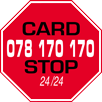- Open an account
- Log in
- My Easy Banking
-
-
Personal information
-
My documents
-
Privacy
-
Settings
-
Logout
-
Daily banking

Bank accounts

Bank cards

Payments

Save and invest

Invest

Save and invest with a goal

Our investment solutions


Financing a property

Finance a vehicle


Family protection

Home protection

Mobility protection

By your side

Specific approach

Online and mobile banking

You are on the version of the site for
Daily banking
Bank accounts
Bank cards
Payments
Our advice
Did you know?

Save and invest
Invest
Save and invest with a goal
Our investment solutions
Our advice
Did you know?

Financing a property
Finance a vehicle
Fund a project
Our advice
An EPC certificate?

Family protection
Home protection
Mobility protection
Our expertise
An EPC certificate?

By your side
Specific approach
Online and mobile banking
Contact us
Did you know?

-
Car sharing: is it for you?
Owning your own car: for three out of four young Belgians, it's no longer a given. This is one of the conclusions of a Profacts survey commissioned by BNP Paribas Fortis. It's mainly in urban areas that young people are considering alternative mobility solutions.
Car sharing has grown enormously in recent years. Last January, there were 150,000 people sharing 4,000 vehicles in Belgium (source: autodelen.net, January 2021), an increase of 30% compared to the previous year.
How does car sharing work?
Car sharing involves sharing a car between several people or households. You only use the car when you need it. If you’re only driving few kilometres, car sharing can be a much cheaper solution than owning your own car.
Take out a subscription...
There are two main types of car sharing. The first involves specialist companies that offer cars to share. You take out a subscription and pay a certain amount per kilometre and/or per hour to use one of these cars. Some providers require you to return the vehicle to its starting point. For others, you can leave it in another location within the same city.
... or not
The second type is private car sharing, although it’s less common. There are two systems. With cost-sharing, one person or a group of people owns the car. Users pay the actual costs of use, based on the number of kilometres driven. With market-priced car sharing, the owner chooses how much to charge per hour or per kilometre, and is similar to a car rental agreement between individuals.
About Ask Your Bank
As a Positive Banker, BNP Paribas Fortis wants to help you see things more clearly when it comes to money. That's why we asked over 1,000 Belgians about any questions and concerns they had. With our Ask Your Bank series, we address those questions and concerns in a fully transparent way. Because making your life easier is also what Positive Banking is all about.
Help
Daily banking
Save and invest
© 2025 BNP Paribas Fortis


